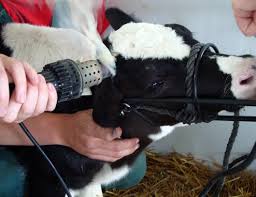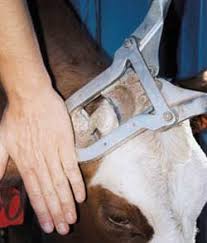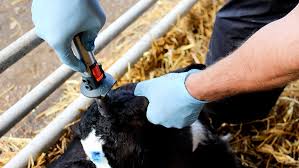Dehorning or disbudding is the practice of removing an animal’s horns or horn buds, depending on the age of the animal and the stage of horn growth. Dehorning or disbudding should be done between 7-10 days of age for goats and prior to 3 months of age for cattle.
It should be pointed out that perhaps the most simple and effective method of dehorning is to select polled breeding stock (though this is not always possible within some breeds and species).
Methods of Dehorning
1. Chemical Method
The chemical method involves the use of alkalis, such as CaOH, KOH, or NaOH, which can be applied in the form of a paste.
Procedure
- Clip the hair around the horn bud to expose it.
- Apply petroleum jelly (e.g., Vaseline) around the bud to prevent the chemical from touching other areas, such as the eyes.
- Rub the paste on the horn bud until a little bit of blood appears. This method should be applied to calves aged 3-10 days.
Read Also: Importance of a Fish Feeding Point in a Fish Pond
Hot Iron Method (Electric Cauterizer)

In this method, the iron is electrically heated until red hot, usually above 500°C, and a cup-shaped end is pressed firmly on the bud until the matrix cells are destroyed. This should take no more than 10 seconds.
Care must be taken to ensure that the iron does not go too deep into the head. This method is carried out on cattle that are under 3 months of age. It requires more time and is painful.
Read Also: Importance of a Fish Feeding Point in a Fish Pond
2. Clippers and Saws Method

This method is carried out on cattle that are over 3 months of age. It is a bloody operation that involves the use of clippers or saws to cut off the horn. This should be done in cold weather to minimize pain.
3. Cosmetic Dehorning Method
This method involves the use of lidocaine along the base of the horn. Stitch the skin around the bud before applying the lidocaine.
Do you have any questions, suggestions, or contributions? If so, please feel free to use the comment box below to share your thoughts. We also encourage you to kindly share this information with others who might benefit from it. Since we can’t reach everyone at once, we truly appreciate your help in spreading the word. Thank you so much for your support and for sharing!
Read Also: Effect of Tropical Climate on Animal Parasites, Vectors and Diseases
Frequently Asked Questions
We will update this section soon.

